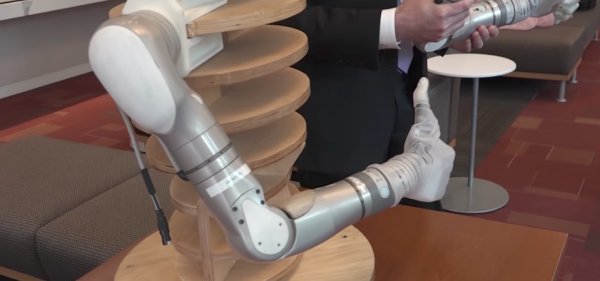

For two veterans, Fourth of July marked a different kind of celebration. On June 30, Army soldiers Fred Downs and Artie McAuley were gifted with new arms by Department of Veterans Affairs Secretary David Shulkin himself in a ceremony in New York.
But these aren’t exactly normal arms: they were developed as part of a Defense Advanced Research Projects Agency project known as Life Under Kinetic Evolution or “LUKE,” an eight-year study undertaken by the VA to provide veterans with more human-like prosthetics.
What makes the LUKE arm so special compared to other prosthetics is that they allow for “smooth and simultaneous movement using motors at the shoulder, elbow, wrist and hand to flex and turn or lift and grip,” according to The New York Times. Unlike typical prosthetics, LUKE arms provide dexterity, mobility, and grip, almost like a real hand.
WATCH MORE:
“This is the first device that intuitively moves multiple joints at one time,” Dr. Leif Nelson, a developer who worked on the project, told the New York Times. “With other technology, you had to use the hand, then stop. Use the wrist, then stop. It wasn’t fluid.”
The arms were first tested at Walter Reed National Military Medical Center in Bethesda, Maryland in December 2016. Downs lost his arm to a landmine while serving in Vietnam in 1968, while McAuley was injured in a car accident while working with an ordnance unit in upstate New York in 1969. The pair participated in the research at Walter Reed that was used to test the LUKE arms, and for that reason, they were selected as the first two of 10 veterans to receive the arms.
“It’s given me hope for the future,” McCauley said. “It’s not that I want to be remembered, but I would like this to be an inspiration for people down the road.”
The LUKE arms are manufactured by Mobius Bionics in Manchester, New Hampshire, and they will be available for civilian purchase at a cost in the low six figures, The New York Times reports.
Task & Purpose reached out to DARPA for a statement and will update as more information becomes available.
